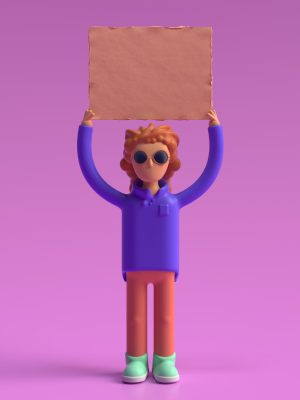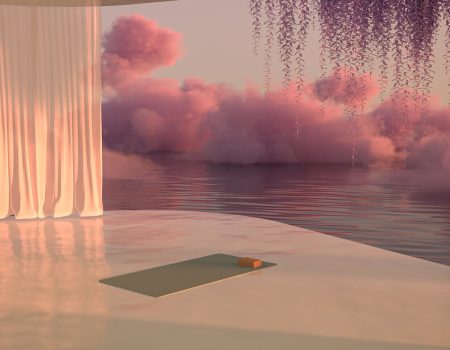First of all, we all want to find the best digital art software but it’s easier said than done. In this article we will look into the different digital art software that are available and which one would suit you and your art. In general one could say that it depends on the kind of artist you are and how much you have to spend. Do also take a look at our article on how to sell digital art.

Top 6 Digital Art Software Picks
Below you will find the top digital art softwares that I have found on the market. Of course there are many others but these ones are worth mentioning and exploring.
1. Adobe Photoshop. Of course the first one, and one of the most popular and versatile digital art software programs available. Offering a wide range of tools and features for digital painting, photo editing, and graphic design. My personal favorite as its so easy to use and understand,
2. Adobe Illustrator. Second one up, another industry-standard software for creating vector graphics and illustrations. Furthermore it’s particularly well-suited for creating logos, icons, and complex illustrations.
3. Procreate: Oh the beautiful Procreate. Most of all a very powerful digital painting app for iPad that has gained a lot of popularity among artists for its intuitive interface, extensive brush library, and seamless workflow.
4. Corel Painter: Fourth example if digital art software is Corel Painter. Above all a professional digital art software program that simulates traditional painting techniques. Portraying a wide variety of brushes and tools to mimic different mediums such as oil, watercolors, and pastels.
5. Clip Studio Paint: Let’s not forget Clip Studio Paint. One of the most versatile digital art software and popular among comic artists, manga artists, and illustrators. Mostly used for a wide range of features and for creating comics, illustrations, and animations.
6. Krita: Last example is free and an open-source digital painting program that offers a comprehensive set of tools for artists. Also suitable for both beginners and new to how to do art online. and advanced users and supports a wide range of file formats.
Choosing the Best Digital Art Software Programs For You And Your Art

Now that you have read about the top 6 ones it’s time for you to decide which one is most suitable for your digital art software. Ask yourself, what kind of artist am I and where do I want to be seen.
Choosing the best digital art software program for your needs involves considering several factors based on your artistic style, preferences, workflow, and budget of course.
Here are a few things to consider before making your decision:
Artistic Style and Goals
First of all, consider the type of art you create. Are you into digital painting, illustration, graphic design, or photo editing? Obviously, you know what you are and what it is you are trying to create.
Some software may cater better to specific styles. For example, Procreate is popular among digital painters, while Adobe Illustrator is favored by vector artists.
Features and Tools
Try looking for software that offers the tools and features you need for your artistic projects. This could include brushes, layers, blending modes, text tools, selection tools, and more. Find out what you need to create. Perhaps, research advanced features like 3D modeling and rendering in digital art, animation, or perspective tools if you require them for your work.
User Interface and Workflow
What do you like an interface to do? Above all, choose software with an interface and workflow that aligns with your preferences. Some artists prefer simpler interfaces, while others may need more complex tools and customization options.
Think about how intuitive the software is for you to use. After all, a smooth workflow can significantly impact your productivity and creativity.
Digital Art Software Compatibility and Integration
Another thing not to forget is to ensure that the software is compatible with your operating system (Windows, macOS, iOS, Android, etc.). I mean not checking if it is would be a mistake.
So, if you work in a collaborative environment or need to exchange files with other software, consider compatibility and integration with other tools or file formats.
Performance and Stability
Look for software that runs smoothly on your device without significant lag or crashes.
Also always read user reviews and testimonials to gauge the stability and performance of the software under different conditions. If there are any negative reviews, read what they are and if it could have been avoided. Some customers are just negative but no true evidence of any wrong doing so try to make your own decision.
Community and Support
Are there any tutorials, online forums, and communities related to the software? After all, this can be helpful for learning new techniques, troubleshooting issues, and getting support from other users.
Regular updates and active development to ensure it stays relevant and up-to-date with new features and improvements.
Cost and Licensing
Now to the big one, costs! More importantly, determine your budget and whether you prefer a one-time purchase, subscription-based model, or free/open-source software.
Advice! Keep in mind any additional costs for add-ons, plugins, or resources you may need to enhance your experience with the software.
Trial and Exploration For Your Digital Art Software
Take advantage of free trials or demos offered by software vendors to test out different options before committing. I would always go for a trial period first. Just to be sure you like it.
This will allow you to experiment with multiple software programs to see which one feels most comfortable and suits your needs best.
Keep in mind that ultimately, the best digital art software program for you will depend on a combination of these factors and your personal preferences as an artist. However, it may take some trial and error to find the perfect fit, but investing time in research and experimentation can lead to discovering the ideal tool for your creativity.
Unleashing Your Creativity: Best Digital Art Programs
There are 2 more top digital art software that I would like to mention and that us Affinity Photo and MediBang Paint.
The first one, Affinity photo is a very powerful alternative to Adobe Photoshop and works well for editing and creating art.
MediBang paint, on the other hand is a free digital software version mostly used for creating comic and painting. I would you say it has a very uderfriendly interface that a child could understand. Bets of all, its free.
Elevate Your Artistic Skills with the Ideal Program

However, elevating your artistic skills with the ideal digital art program involves more than just selecting the right software. Most of all, it also requires dedication, practice, experimentation, and continuous learning.
So take a look at these tips to help you make the most of your chosen digital art program and improve your artistic skills:
- Master the Basics: Spend time familiarizing yourself with the fundamental tools and features of the software. Learn how to navigate the interface, work with layers, use brushes effectively, and understand basic concepts like color theory and composition.
- Explore Advanced Techniques: Once you’re comfortable with the basics, delve deeper into the software to explore more advanced techniques and features. This could include learning about advanced brush settings, layer effects, masking techniques, and customizing shortcuts to streamline your workflow.
- Take Online Courses and Tutorials: Many digital art programs offer official tutorials and online courses to help users improve their skills. Take advantage of these resources to learn new techniques, workflows, and creative approaches directly from experts.
- Join Communities and Forums: Participate in online communities, forums, and social media groups dedicated to digital art. Engage with other artists, share your work, seek feedback, and learn from the experiences and insights of fellow creators.
- Experiment and Practice Regularly: Don’t be afraid to experiment with different tools, techniques, and styles within the software. Set aside dedicated time for regular practice sessions to hone your skills and explore new creative possibilities.
- Seek Inspiration: Look for inspiration from a variety of sources, including other artists, art books, galleries, nature, photography, and everyday life. Analyze and deconstruct artworks you admire to understand their techniques and incorporate elements into your own work.
- Challenge Yourself: Set personal artistic challenges and goals to push yourself outside of your comfort zone and continue growing as an artist. This could involve trying new subjects, styles, or mediums, participating in art challenges or competitions, or working on larger, more ambitious projects.
- Receive and Apply Feedback: Be open to receiving constructive feedback on your work from peers, mentors, or online communities. Use feedback as an opportunity to identify areas for improvement and refine your skills further.
- Stay Updated: Keep abreast of new updates, features, and trends in both the software and the digital art industry. Follow software developers, art blogs, and industry news to stay informed and adapt your skills accordingly.
- Practice Patience and Persistence: Developing artistic skills takes time, patience, and perseverance. Embrace the learning process, be willing to make mistakes and learn from them, and celebrate your progress along the way.
By combining the right digital art program with dedication, practice, and a willingness to learn, you can elevate your artistic skills and create increasingly impressive and meaningful artworks
Mastering the Art: Best Tools for Digital Artists
Let’s now look into the kind of tools that you will need. We have already discussed the top different digital art software. Discussed which one is best for you and how to elevate your artistic skills to the next level. However, mastering the art of digital art requires not only talent and creativity but also the right tools. Like for example, you will need:
a digital tablet
stylus pens,
color tools,
accessories
some brushes.
Digital drawing tablets can be divided into two.
First one, Wacom Intuos Pro that can offer precision and sensitivity for professional digital art. The second one, XP-Pen Artist Pro. Most of all an affordable yet feature-rich tablets with excellent pressure sensitivity.
When it comes to stylus pens, then there is the Wacom Pro Pen 2. Most know to offers exceptional pressure sensitivity and tilt recognition.
However if you are more into iPads then the Apple Pencil would suit you as it is specifically designed for use with iPads, providing precise control and responsiveness.
Last pen example would be the XP-Pen P05R Stylus. Features custom made buttons and excellent compatibility with various drawing tablets. More than can say for a lot of them.
Color Management Tools
The calibrated monitor is going to be crucial for you to be able to ensures the accurate color representation for your digital artwork by calibrating the display to industry standards. Furthermore you’ll need the color picker software as this will helps you identify and select colors accurately by providing RGB, CMYK, and hexadecimal values.
Digital Art Brushes and Textures
Get yourself custom brush sets. It’s very practical to have a variety of brush presets for different artistic styles, including oil painting, watercolor, and sketching.
Not to forget texture packs as these will provide digital textures and overlays to add depth and realism to digital artwork.
Drawing Software Accessories
Understandably you need to see it all and with a graphics tablet stand you will be able to elevates the drawing tablet to a comfortable viewing angle, reducing strain on the neck and shoulders.
Hate them or love them, the shortcut key remote. Of course allows you to assign custom shortcuts and commands for quick access to frequently used tools. A bit time -consuming at first but worth it.
Digital Art Accessories
When it comes to digital art accessories, I do have to mention the importance of having an adjustable ergonomic stand. A little expensive to start with but really helps you maintain a comfortable drawing position for extended periods.
Furthermore, you need a pair of drawing gloves. Most of all because this reduces friction between the hand and the drawing surface, preventing smudges and improving accuracy.
Last important digital art accessories are screen protectors. Since you have paid a lot for your equipment the do protects the surface of the drawing tablet from scratches and reduces glare for better visibility.
By investing in high-quality tools and equipment tailored to your artistic preferences and workflow, you can enhance your digital art creation process and master your craft more effectively.
Wrapping Up
Last few words abut the choosing the of selling digital art software. Above all, it depends on the kind of artist that you are and how important an user friendly interface is. Do you want to sell your digital art products to a lot of people or just a few select? There are so many questions that you need to ask yourself but most of all, just stay true to your art and wit a bit of trying and failing you will find your niche and your ideal digital art software.
